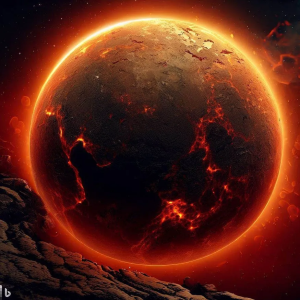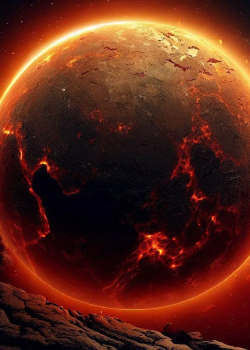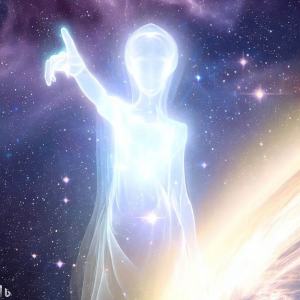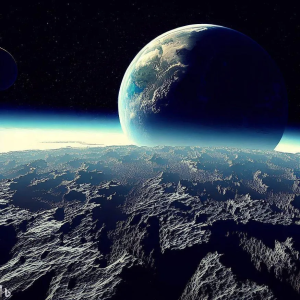
(Previous)….(Content)…..(Next)
Earth’s (Terra’s) first “steps”
The period from the formation of the planet until the “arrival” of water
(Romanian)

I once tormented the author with the description of what I would describe to you next. Then, over 10 years ago, I got him to describe something about your “First Steps of the Laws of the Universe” (Part 1 and Part 2). But this is your story at this point in your knowledge, with constant updates keeping up with what You call your “conquests of science”.
I hope you realize that we are evolving along with your time! This is the only real benchmark we have. Likewise, I hope you realize that we are perfecting everything we do, constantly improving, completing, and correcting the “problems” that arise, whether compared to something that has been created before, when we know to understand and “apply” that “something”, either innovating…
Ohhh, We do a lot and most of all, We give it Our „all”. More correctly, perhaps I repeat myself, We give everything that Our knowledge allows Us around the manifestation of the group of Our conflicts. Something like “We belong”. Additionally, through experiences, especially in the case of innovations, We “feed” the “Great Knowledge” that will help areas with conflicts like Ours…
But let’s “get down to business”! These days we will describe the “Birth and evolution of the Earth, the Terra, as you call it, in the new “method” of transmission for the “Medium”.
We’ve seen what’s up with the Universe in which our Earth exists, so we now have a knowledge base to “see” what’s up with it too, advancing step by step toward what interests us, life.
Earth, Our planet, and Yours are extraordinary, born of the multiple efforts of this extraordinary universe in which we exist. It provides everything necessary for life to exist, for us to think and “live our lives”, experiences, accumulations, blah, blah.

And, 4.5 (4.6 to 5) billion years ago of Yours, in the places where the Earth of Your days rests, there was nothing but a huge cloud of cosmic dust, from the combination of the particles of this cosmic dust going to be it gave birth to everything.
The existence of this system was born several billion years ago, when the previous star of this energy zone completed its cycle and “exploded”, scattering all manifestations of matter known to you into this “sphere” of manifestation.
But its mere existence was not enough. Then, We “got down to business” with all available energies.
In their studies, scientists have discovered areas in the universe like the one in which the Earth was formed. And, because the sky you are looking at is, in fact, a history, they were able to recreate the history of the creation of Our Earth, Yours (heavenly bodies are at distances of light years, tens, hundreds, thousands, millions, and what you see is, in fact, what is happening there at the times when the light was emitted that is only now reaching you (I have already conveyed this to you).
Thus, in the “Eagle” nebula (in your days we see what happened there 7,000 years ago because this nebula is 7,000 light years away from you) you can see huge formations of “cosmic dust” called by specialists in “stellar nurseries “.
Here, in the area called “Pillars of Creation”, there are clouds of matter (cosmic dust) of immense dimensions. And, these clouds, considering the age of 13.7 (13.8) billion years of the Universe, possibly less than a billion years of yours, years that have passed since the closing of the stellar cycle in that area, not they “intended” to “compress”, to evolve, to be able to form stars, planets or the like.
At least that’s what you could deduce. That is an energy zone that belongs to other “rules” of formation, and the entities there do their thing, which is quite like what I will describe and what happened here.
Going back, scientists only asked why this “nursery of stars (and/or solar systems)” did not manifest similarly to your solar system…
And, in 2007, the Spitzer Space Telescope captured the image of a huge ball of gas developing “behind” (relative to your viewing position) the Eagle Nebula. This huge bubble of gas was nothing more than evidence of the explosion of a huge star — a supernova. One of the stars in this nebula will complete the cycle of development in that area.
This explosion first sent a huge wave of superheated plasma, followed by the “wave” of matter produced by the disintegration of this star. We are thus dealing with a huge shock wave heading toward the “Pillars of Creation” …

When this wave reaches these pillars, it will demolish them, and produce a chain of events that will lead to the accumulations of matter necessary to ignite the stars in that area and form star systems (by “plasmatic activation” of the large mass condensations that will “light up” the stars, accompanied by the formation of protoplanetary disks), thus attracting the creation of new worlds.
So, this is how the death of a star will lead to the birth of other stars (at least, this is what scientists say, noticing other similar phenomena at the level of the “history” of our visible universe).
Thus, it was concluded that similar processes occurred in the case of the formation of our star, called the Sun, and of our solar system.
But is it possible not to reach other conclusions?!? An event of “proportions” is needed to be able to “attract” a phenomenon that needs so many “astronomical” chances to reach production.
The age of the universe can be a “mitigating” factor of these “astronomical chances”, as well as the huge number of “nurseries” in the universe, but it is quite difficult not to think of something related to a divine power that attracts the “unfolding” such a process, which would “defeat” the minuscule chances that such a thing would happen (or, at least, a “programmed” process that has no way of “happening” otherwise).
Moreover, it is interesting that Earth has exactly the optimal distance to the Sun, the optimal size, a satellite of the exact size to attract gyroscopic stabilization, and the other processes that participated in the formation of life and for water to be “perfectly usable” by life.
Everything is perfectly “tuned” for life to appear…
Returning to our “story”, the waves of plasma (a form of “high energy expression” of matter) and matter from the supernova that exploded in our “neighborhood” (understanding that this “neighborhood” can also mean millions of years, light years) determined the ignition of an already existing concentration that induced the ignition of the Sun.
But how was this concentration of matter formed that led to the ignition of the Sun? Here, things are quite simple due to the action of gravity, which acts much more easily on gases than on matter particles (at least this is what scientists confirm).
Gradually, throughout just “a few” billion years, the gases concentrated due to gravitational pull into accretion centers (the places where future stars will form), something that did not happen to the rest of the heavier matter from the point of view of structure and atomic mass.
And, the wave of energy from the supernova that “devastated” the local matter cloud (nursery) through energy surplus led to the ignition of all the stars around us, including the Sun.

Interestingly, the “last minute” discoveries attest to the fact that the initial matter is grouped in a kind of layered clusters well delimited by space… Yes, you read correctly… In the case of our solar system, the first “bubble” (elliptical) is called the heliosphere, which extends to the so-called “terminal shock” limit (placed somewhere around 100 solar astronomical units — one astronomical unit is equal to approximately 150 million kilometers, the distance from the Sun to the Earth, denoted by the symbols “AU” — so approximately 15 billion kilometers from the sun).
Concretely, this heliosphere represents not only the area of the magnetic influence of the Sun, but also the area of the presence of the solar wind, (which has speeds between 300 and 800 km/s).
At this “terminal shock”, scientists discovered that the solar wind suddenly slows down to zero, due to “external pressure” from the interstellar medium… Interesting, isn’t it?!?
The next layer, called the “solar void” (heliosheath), is a transition zone between the heliosphere and the interstellar space that extends to a kind of limit called the “heliopause” … This zone of “solar void” was confirmed by Voyager as a kind of magnetic bubble boundary where the intensity of the magnetic field doubles and the presence of high-energy electrons increases dramatically.
In this zone, the solar wind slows down to zero and is divided into three layers, according to this evolution of the solar wind (slowdown zone, stagnation zone, and free zone).

From this heliopause, scientists have discovered that there is a real wall of hydrogen that extends to the so-called “Bow Shock” limit. This hydrogen wall was discovered by the Voyager 1 probe, which also measured a steep increase in plasma density (about 40 times), later confirmed by the Voyager 2 probe (subsequent confirmations also came from the Pioneer program probes 10 and 11).
So, in addition to this “layered” (possibly also “core”, and “cellular”) structure of the solar system, some elements worthy of great question marks appear. The first definite evidence is the distribution of matter within the heliosphere. This is arranged in the form of a disc around the sun and well beyond the boundaries of the Bow shock, somewhere after 1,500 AU, the “Oort cloud” appears, which completely envelops the entire “solar bubble”, extending up to 15,000 AU.
So, we are dealing with a true cellular structure… Nothing else… Maybe it is an area from which the Sun “pulled” its matter, like the planets… Maybe… But why does it have clear boundaries?!? You will have the answer someday… Let’s come back!
Now comes the time to present elements about the formation of the planets that surround the newly formed stars and, therefore, our solar system.
The remains of matter, which I mentioned above, were much too small to lead to their condensation into larger, meaningful structures. At most, we reached (literally) small dust balls, without the firmness of rocks that even characterizes meteorites (being a simple agglomeration without adhesion between its components).

In addition, it was found that, due to the homogenization of gravitational forces, these particles of cosmic dust were also in a kind of forced equilibrium immobility, due to the relatively perfect “distribution” of the gravitational force between these particles, the accidental collisions between them doing nothing but disintegrate these balls of dust and create a new balance.
Thus, the plasma wave (from the activator supernova explosion), which passed over the accumulations of cosmic matter, created both the electrostatic charge necessary for the attraction processes and the impulse necessary to start the “auxiliary” rotation movements (along with the initial “kinetic” moment, existing) to later concentrations in protoplanetary disks. Simultaneously, the ignition of the Sun also initiated the gravitational support of orbital “capture”, keeping the concentrations of matter around it, in the future new solar system.
So, the appearance of massive electrostatic charges, due to the plasma wave from the “neighboring” supernova, is “what” attracted the formation of matter concentrations. How is that?!?
This plasma wave triggered the production of a veritable cosmic storm of electrical discharges, turning cosmic dust clouds into something similar to the electrostatically charged (“storm ready”) water clouds on the earth as we know it (plus, the energy transferred after principles of material interaction, movements that initiated the circular behavior of these movements, including the one around the point of gravitational balance, the one represented by the central star, the Sun).
And, these immense electric discharges, of cosmic dimensions, attracted the formation of balls (literally) of molten matter, which, later, took the spherical form (of perfect balance) of liquid matter.
Later, upon cooling, they became capable of greater “gravitational” accumulation than that in dust balls. And, continuing the process, the electrical discharges melted the new mass, even partially (but enough to “glue” its components), resulting in increasingly larger elements (pebbles, then boulders) … Traces of these processes can be “visualized” inside meteorites that have an internal structure composed of multiple balls of matter stuck together.
And, with the help of these pebbles and boulders, gravity continued to “work” better and better, especially since it was now also helped by the gravity “supplied” by the newly formed star, the Sun.
This is how the first larger boulders were formed, comparable to today’s asteroids, then they acted with an increasingly greater gravitational force, forming the first meteorites with kilometers in diameter (if you can say so because the first pebbles were spherical but the first rocks were not, having irregular shapes, because they did not “benefit” from the integral melting and spherical structuring typical of liquids, but only from the forced “gluing” of random collision-type interaction processes that were “quite accidental”).
And so, the processes, being more and more “hurried” by the increase in the gravitational attraction generated by the increasingly larger bodies, brought everything to the stage of formation of the first important bodies, the protoplanets.

These protoplanets initially had to collect enough matter to be able to activate the gravitational mechanisms for structuring matter in the almost spherical shape characteristic of planets.
Thus, any “relief” irregularity of the protoplanet structure collapsed under its weight (gravitational effect) until the protoplanet became almost spherical, the most efficient form of agglomeration under gravitational effect (from all points of view).
The Earth now has the spherical shape of the planets, but it is still a ball of heterogeneous stone from the accumulations of all kinds of pieces of material, structured from all kinds of materials.
It should be mentioned that, at a certain size, the forming protoplanets had a core of molten matter, due to the thermal effects of the immense pressures that occur in this situation, in addition to the heating due to the bombardment of rock pieces, meteorites, etc. and the possible interactions with accumulations of radioactive matter and other heat-generating sources.
But all that will change. Under the effect of the continuous bombardment of the new “chunks” of matter attracted (consider not only the accumulation of matter, the increase in mass determined by this but also the transfer of the kinetic energy of the “chunks” that hit the ground) but also the increase in mass reached certain critical values.

Thus, the Earth begins to warm, then overheat.
Thus, the whole planet is no longer an agglomeration of rocks but an agglomeration of molten rocks, literally liquid (magmatic). It is estimated that the temperature that Earth had then was at least 2,700–3,000 degrees Celsius, the temperature found in metal melting furnaces (others say it was 8,000 degrees, similar in temperature to that of the surface of the Sun). And, this liquid state, an endless ocean of lava, comparable to “Dante’s Inferno,” will last for a long time.
During this initial liquid state (there will be another such state), heavier materials, such as iron and other metals, literally “descended” to the center of this protoplanet, forming the planet’s first metallic core.
This metallic core has remained liquid to this day and, even since then, generated the first magnetic field (weak, it is true, unable to maintain a “considerable” atmosphere, but existing).
And, the lighter materials, the mineral rocks, rose, forming a kind of incipient mantle. This phenomenon also led to the rise of water, which, due to the heat, turned into vapors, vapors which… were lost under the action of the solar wind. Yes, you read that right, there is no water left (in quantities that “can be taken into account”) on the proto-Terra!
At those times, Earth was much too small (it is estimated that it had the maximum “volume” of the Moon — only a few hundred kilometers or, anyway, a little over 3,000 — the Moon has a diameter of 3,472 km) to be able to maintain a consistent atmosphere, possibly a significant amount of water (see the planet Mars, which is half the current diameter of Earth at 12,750 km, plus the fact that it is much less dense, and has too little atmosphere to be considered).

Or, possibly, the Moon, which is quite a large body but does not have the “power” — I used this term because it is about not only the gravitational capacity but the possibility, the power to overcome the action of the solar wind by its gravity and possibly its existing magnetic field — to maintain an atmosphere, be it borrowed from the Earth).
Time passed, and cooling began, along with the thinning of the bombardment of matter, and thus the first terrestrial crust appeared. But although this new world had pretty much everything it has today, it had to grow to become the functional and wonderful Earth of today.
And, in those times (100 million years after the evolution of the proto-Earth), there were already hundreds of protoplanets that “revolved” around the Sun, following the scenario of evolution and attraction until then: to accumulate increasingly, what’s more, to what we know today is the solar system.
That period was called the “War of the Titans” because now only the titans of matter, protoplanets, collided. This period lasted over 30 million years. Some protoplanets were effectively shattered from these collisions, while in other crashes, the smaller protoplanet would be consumed by the larger one.
And, of course, one of these protoplanets, Theia (this name was taken from Greek mythology, where Theia is the mother of the goddess Selene, the goddess of the Moon — but there are other names for this planet, such as Lucifer, etc.), was heading straight for the proto-Earth.
This planet was the size of Mars, larger than proto-Earth. Fortunately for us, this collision was tangential (plus the planets were in the same direction of travel and not opposite directions, so the impact resulted only from the difference in travel between the fastest, Theia, and the slowest, Terra), producing the destruction proto-planet Theia and not the “swallowing” of Earth. Honestly, I don’t understand where this certainty of the identification of the planets comes from, but, for the rest, the scientists are right…
Another “happiness” arising from those events is represented by the fact that this “Theia” was also liquid (or almost “liquid”), a fact that produced a kind of mitigation of the effects of the collision, further favoring the inclusion of a large mass of it in the planet with a lower speed (in our case, Terra).

From this collision, Terra increased its huge volume, close to its current dimensions, and Theia almost “broke” in two, yielding part of Earth’s mass and, from the other (and the fragments resulting from the impact), the Moon was formed.
There were two crucial “chunks” of matter, a larger one that was the early Moon and a cluster of explosion debris. So, for many millions of years, the Earth’s sky had two Moons and a kind of asteroid belt of its own, a kind of planetary annular mass 5,000 km wide, at 75,000–100,000 km from Earth (compared to an average of about 400,000 km nowadays).
Later, the larger part consumed all the other “elements” (many of which were also attracted by the Earth), resulting in the massive Moon of our days, but which was placed in a much lower orbit than the current one and rotated much faster, compared to our days, around the Earth. The Earth also rotated faster around its axis, the day back then being only 6 hours long.
Thus, the Earth benefited from the “support” of the Moon, represented by gyro stabilization (which maintains the stability of the Earth’s course of movement around the Sun, maintains the stability of the rotation axis, stabilizes the climate and, implicitly, the rotation of the seasons, etc. helping the Earth to be neither warm nor cold for water and therefore for life), attraction and protection, etc. Without the Moon, life would not have evolved on Earth, say all the specialists.
But this impact turned Earth back into a molten planet, a total ocean of magma. The cooling process followed, the descent of the heavy elements (the newly “acquired”) towards the Earth’s core, and the rise of the light elements towards the surface, where, through cooling, they will form the Earth’s crust and so on.
Now a peculiarity appears that will give birth to the Earth we know today. The addition of heavy materials (it appears that they “transferred” almost entirely, the Moon remaining with a “tiny” core compared to Earth) that descended towards the gravitational center of the new planet intensified the protective magnetic field against the solar winds. A fact that contributed to the stability of the atmosphere of those times and the elimination of gas and water losses resulting from the cooling process, due to the friction of the solar wind.
This cooling process led to the formation of the first atmosphere, which, from existing geological evidence, had a high content of N2 (nitrogen), CO2 (carbon dioxide), and CH4 (methane). In addition, both atmospheric and terrestrial, this time, the little water that existed was retained, but it was nowhere near enough to form even a sea, let alone oceans.
Now, when Earth was a dry and “cold” planet, it seems that a collision with a comet followed, an astral body that provided Earth with a massive amount of water. At this point, it is estimated that over half a million years have passed since the Sun ignited and the Earth “began to move”. From this moment on, it will be 4 (some researchers say it would be only 3.9) billion years until the first man runs after his Eve.
Other researchers estimate that it was only a matter of a huge and long bombardment with asteroids and meteorites, which also have their “quota” of ice (they have an average content of 5% water, which, in space, exists in frozen form), spread throughout at least 20, up to 100 million years.

What is certain is that, regardless of the process, even their accumulation, Terra had the necessary water for the future title of “Blue Planet”.
Be that as it may, more than 99% of the earth’s water comes from extraterrestrial sources. And there would be something else… This bombardment, from 3.9 billion years ago, “is said to have” brought to Earth the first amino acids, in sufficient quantities to initiate, possibly accelerate, the processes that will lead to the appearance of life…
However, what if one considers the work of Us, those of us who initiated the exploitation of each small accumulation of water to create the “start” of the “initial” organic matter of subsequent “water” supplies (these processes will be described as “opportune moment”)?!?
Merticaru Dorin Nicolae




